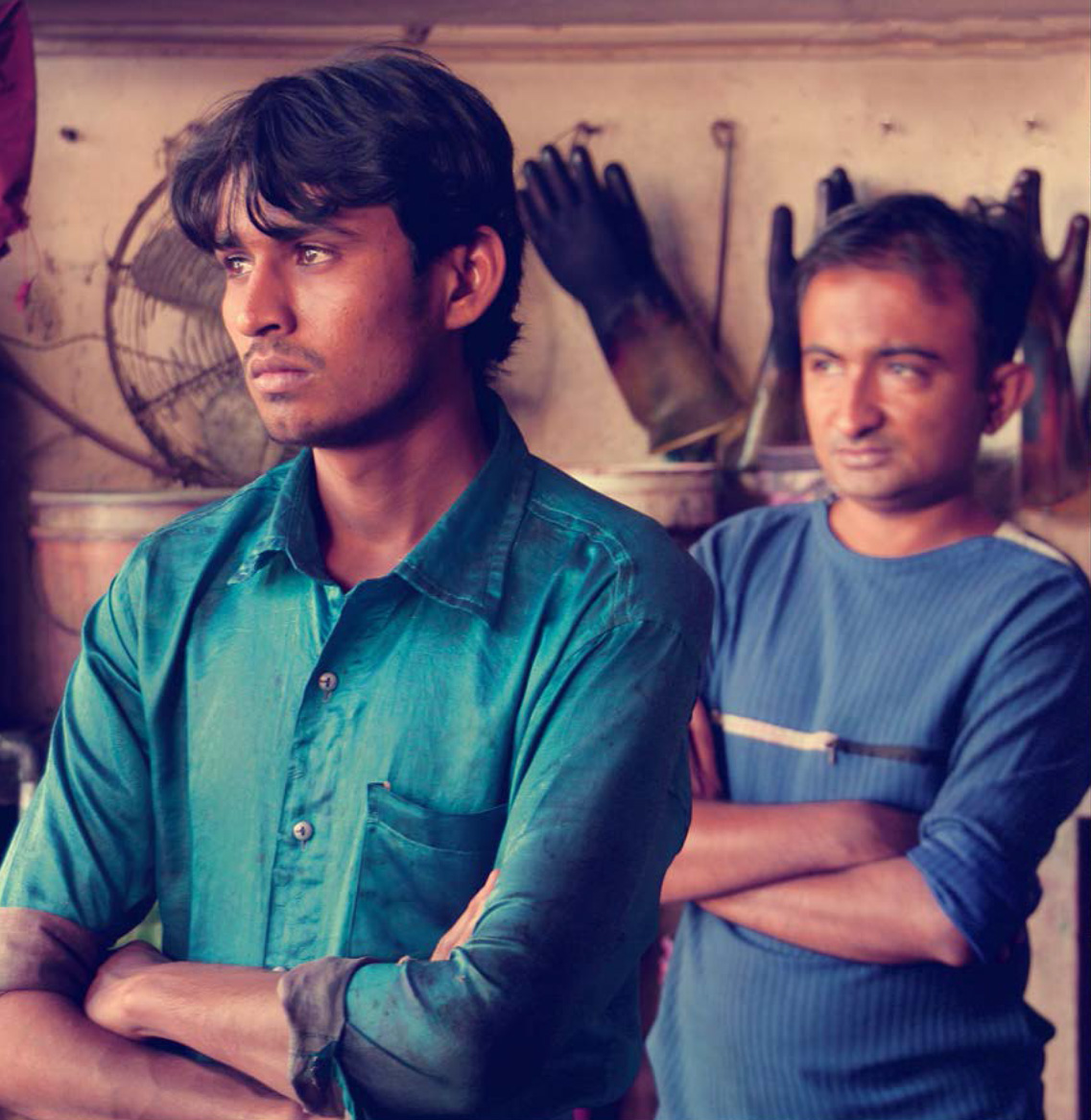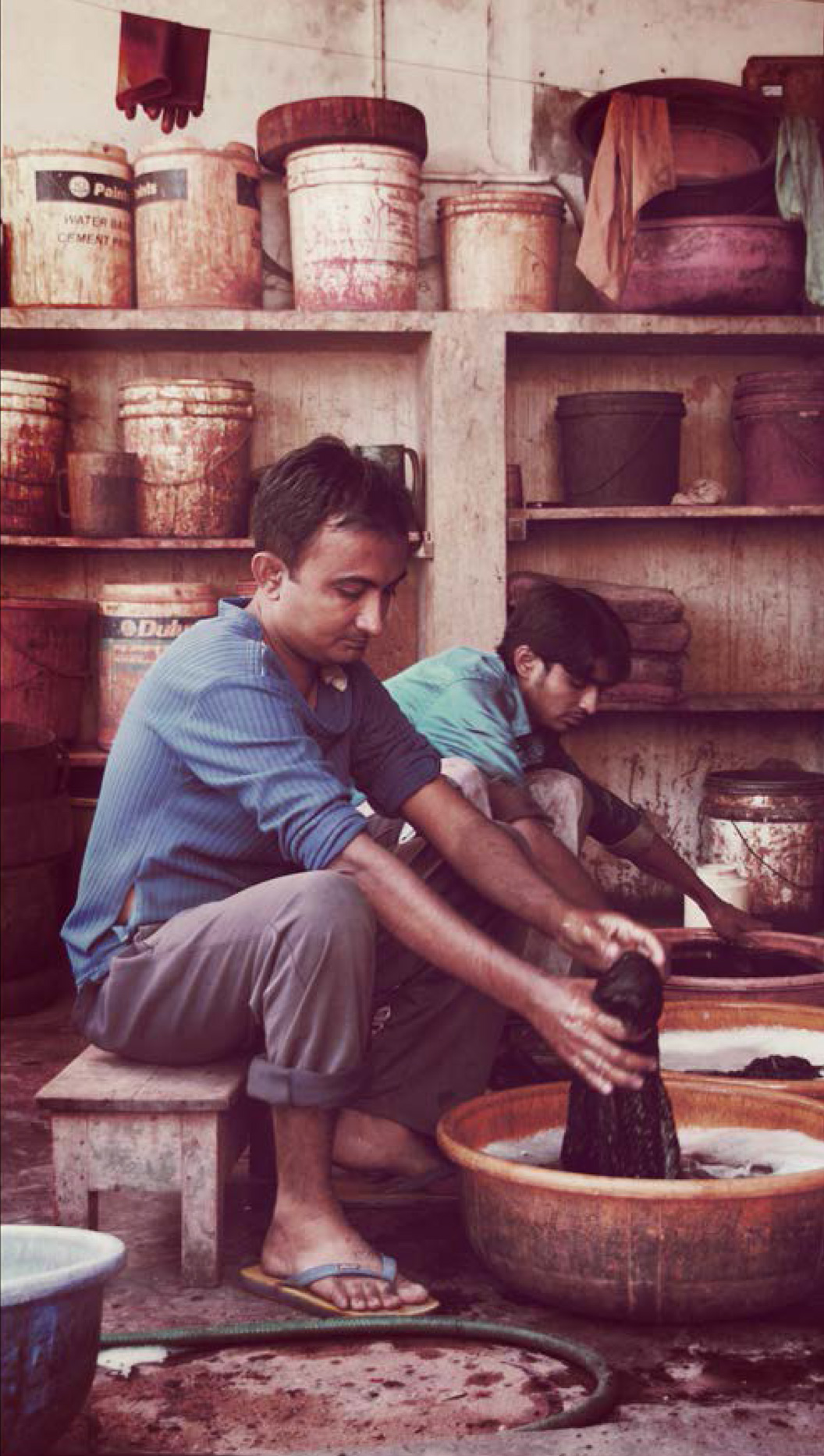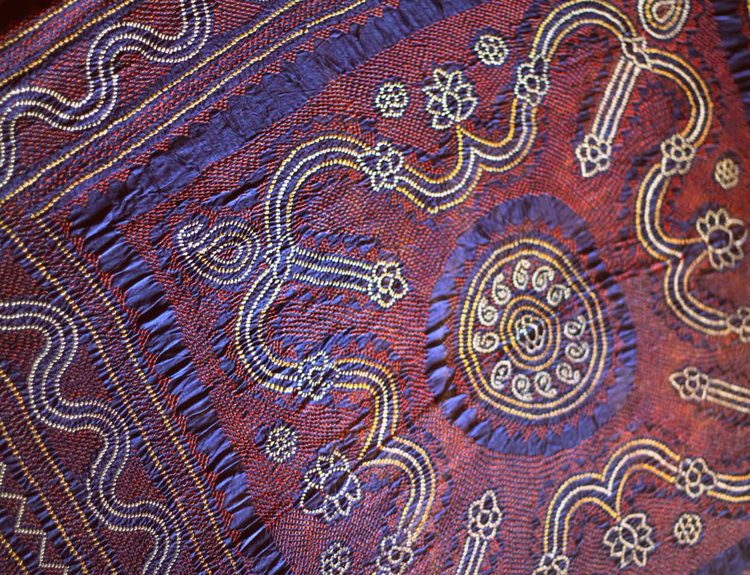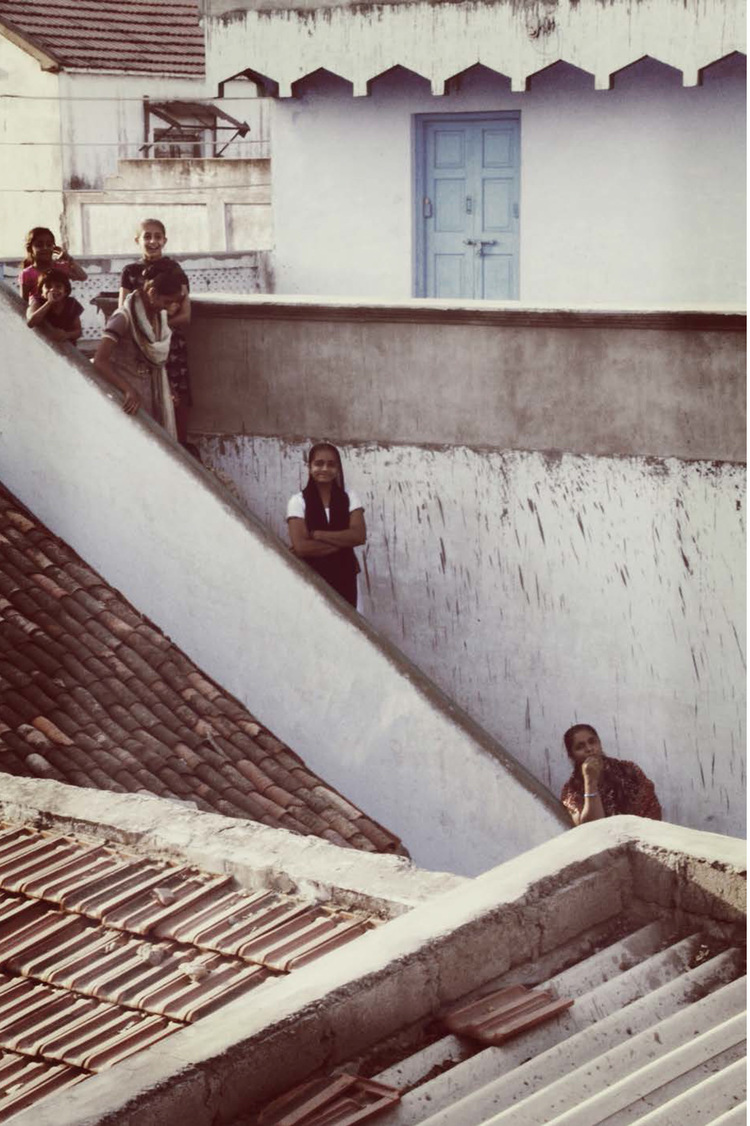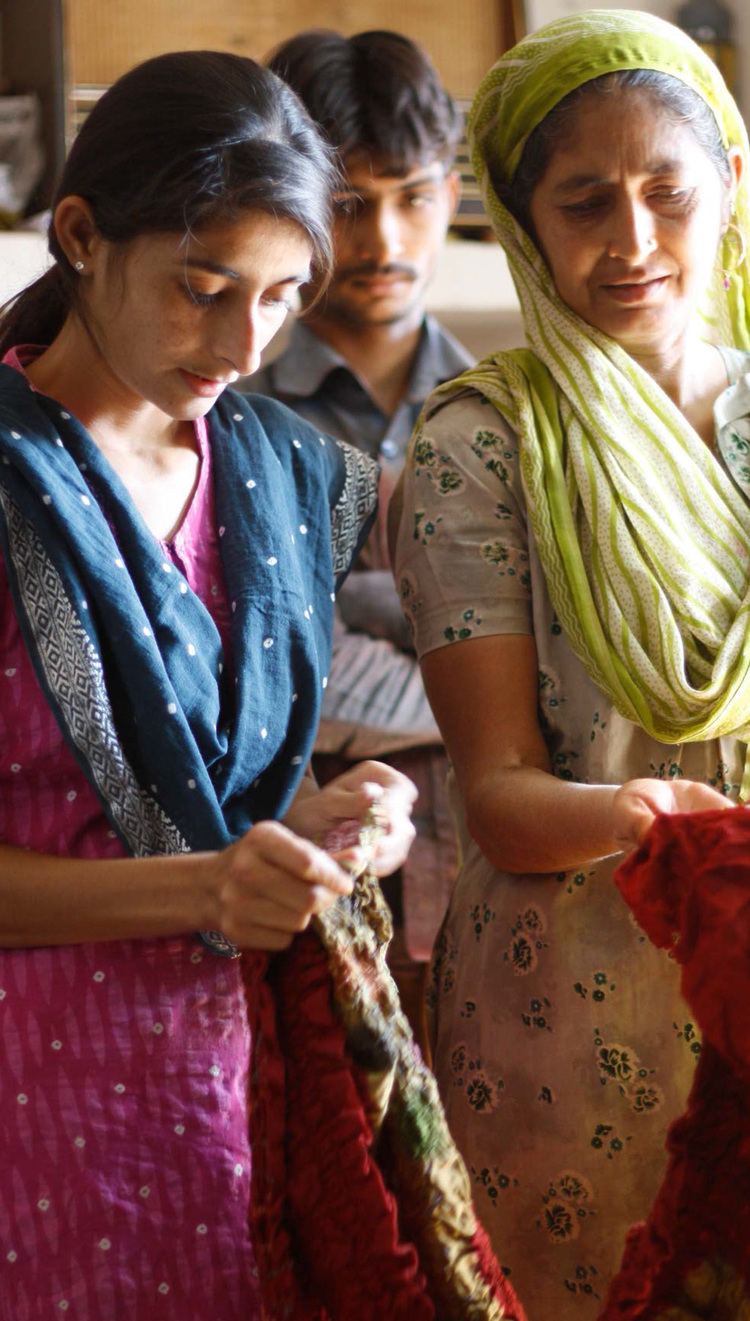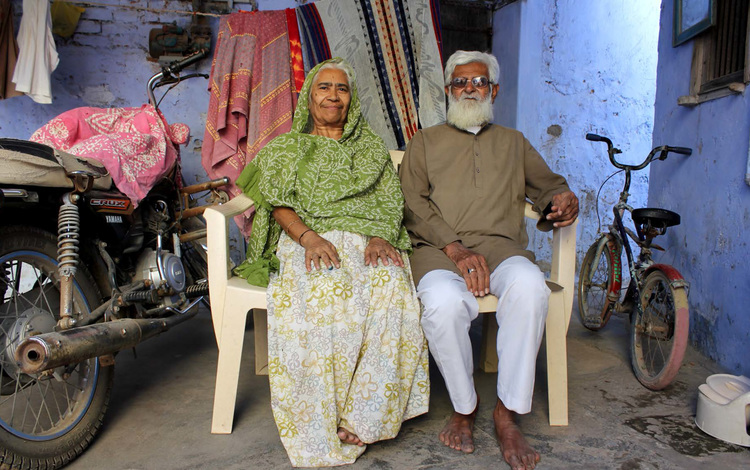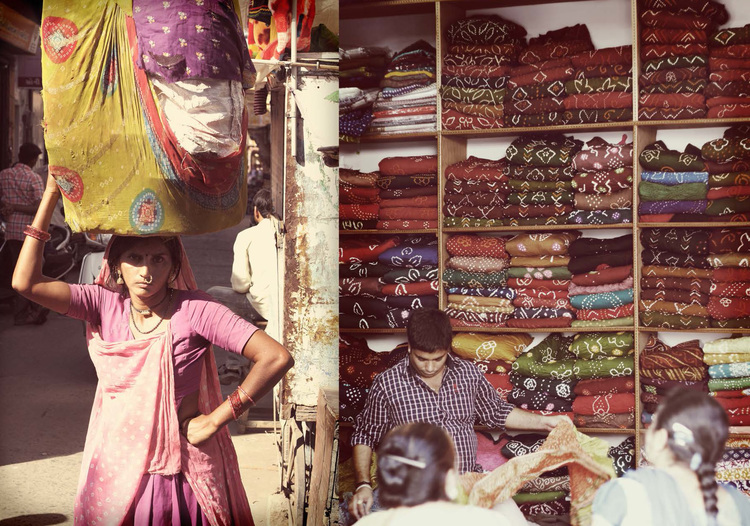Mandvi
Mandvi is a port city located along the sea where the Rukmavati River meets the Gulf of Kachchh. Tracing its establishment to the first Jadeja ruler of Kachchh, Rao Khengarji I, Mandvi was a busy center for maritime trade and merchants earned four times more revenue from export than import. Also known for its shipbuilding, Mandvi has exported bandhani as early as the 15th century.
Today, Mandvi is a major center for dyeing, as its atmospheric conditions are favorable for color fastness. It is also known for the high quality of its cotton bandhani, and a trip to the market leads to collections in numerous bandhani shops with fine tie-dyed pieces sold alongside screenprinted designs selling for a fraction of the price.
Currently, there are about 2000 tiers and 20 families working with bandhani in Mandvi, and business is flourishing for the domestic and international markets. New artisans have joined the business and are benefiting from bandhani's popularity in the marketplace.
Spotlight on the artisans: Abdulaziz Ismael Khatri
Abdulaziz Ismael Khatri, an artisan from Mandvi, comes from a family that has been in the business for many generations. In 1978-79, his grandfather was visited by some designers from Ahmedabad who wanted to experiment with new materials and products such as cushion covers and new blouse designs. Together, they created new collections dyed in lighter shades and even simple black and white. This was a successful venture for this family, and Abdulaziz continues to work with some of those designers.
Even today, Abdulaziz enjoys experimenting with different techniques and has been working with shibori, an old Japanese technique that uses stitching to resist the fabric instead of tying.
“ Back when Mandvi was a busy port city and business was flourishing, bandhani was being exported to so many places that the artisans did not even know where it was being sent. My methods have changed a bit since my grandfather's time. For example, dyeing was initially learned from experience and apprenticeship, and they never measured anything. I don't work like that, I measure all my materials and always record my results. Bandhani's future is dependent on how well people do the work, how strict they remain to their traditions, especially for the 'tying' step of the process.”
PRODUCT FOCUS: GHARCHOLA
The gharchola is a special red odhani with white, green or yellow dots (tikundi), specifically created for and worn by Hindu and Jain brides. This garment is worn over a white sari with a red border known as panetar, and is given to a bride by her husband's family at the time of the wedding. During the ceremony, the odhani is tied to the husband's shoulder cloth while taking their vows. Bandhani is used in weddings as a proof of its freshness, as the ties are first opened at the time of purchase.
The odhani is divided into multiple compartments by gold brocade (zari), and each compartment is filled with motifs ranging from elephants, peacocks, flowers, geometric shapes and dancing figures. These designs are either ‘Bar Bhag' (12 sections) or ‘Bavan Bhat' (52 sections), which is the number of decorative squares/motifs in the odhani.

Spotlight on the artisans: Dharmesh Khatri
Dharmesh Khatri, a shop owner in Mandvi's market belongs to the Hindu Khatri community that has also traditionally worked with bandhani. Historically, the Hindu Khatris were known as “rangchuli” as they worked together as dyers on large stoves in a community space. For many years, both men and women were involved in this work. Today, there are some Hindu Khatris working in Bhuj and Mandvi but many have moved away to Jamnagar and Mumbai, where they work as tiers, dyers or businessmen. Dharmesh Khatri's brother is also involved in the business, but he specializes in making Elaicho, a tiedyed satin weave.
Explore other regions

